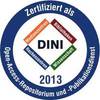Preview |
PDF, English
Download (14MB) | Terms of use |
Abstract
Eukaryotic cells precisely regulate gene expression programs in response to environmental or cellular stimuli, controlling the timing and output of thousands of genes. These transcriptional responses are regulated by a complex network of different molecular mechanisms and their spatial and temporal organization. Critical components of this regulation include local chromatin states and transcription factor (TF) binding kinetics at cis-regulatory elements (CREs) like promoters and enhancers, their long-range interactions, and the local enrichment of TFs and transcription machinery into nuclear subcompartments. Transcription regulation by TFs has been extensively studied using fluorescence microscopy-based assays, while chromatin topology is usually explored through next-generation sequencing (NGS) methods. These NGS techniques encompass chromosome conformation capture, chromatin immunoprecipitation, and chromatin accessibility assays. Data from single-cell chromatin accessibility sequencing (scATACseq) allows to identify CREs in accessible and active states as well as locus-specific TF binding activity at single-cell resolution. However, a model of transcription regulation that integrates genome-wide data on TF dynamics and chromatin topology is still lacking.
This thesis aimed to develop such a model of transcription regulation by collectively inferring local chromatin states, locus-specific TF binding activity, and global chromatin organization from scATAC-seq data. To achieve this, I addressed three specific objectives: (i) Advancing the experimental and computational analysis of scATAC-seq, (ii) developing a computational framework to dissect molecular mechanisms underlying chromatin coaccessibility, and (iii) identifying the structure-function relationship between different regulatory mechanisms and their transcriptional output.
In the first part of this thesis, I identified data sparsity as a key challenge in scATAC-seq data analysis. To address this, I introduced the TurboATAC protocol, which reduces data sparsity by optimizing the transposase reaction efficiency in scATAC-seq. Additionally, I developed a method for allele-aware quantification of scATAC-seq data. Together, these advances enabled me to distinguish true biological variability between cells from data sparsity at individual genomic loci.
In the second part, I developed the R package RWireX, a computational framework designed to resolve different layers of chromatin co-accessibility between multiple genomic loci. RWireX differentiates between different co-accessibility features: Autonomous links of co-accessibility (ACs) and domains of contiguous co-accessibility (DCs). ACs represent spatial contacts between co-active distal chromatin sites, while DCs likely result from local enrichment of TF binding activity in nuclear subcompartments. Furthermore, RWireX revealed different types of ACs, driven either by targeted structural chromatin loops or by random spatial interactions within dynamic chromatin regions.
In the third part, I analyzed various human and mouse cellular systems under perturbation with RWireX to link genome-wide regulation mechanisms with their functional transcriptional output. These analyses revealed that promoters, ACs and DCs regulate with distinct transcriptional bursting kinetics. Promoters and DCs primarily regulate burst size, leading to a rapid transcriptional response. In contrast, ACs mainly regulate burst frequency, revealing slower transcriptional changes. Promoters induce a significantly stronger response compared to ACs and DCs. However, ACs and DCs can co-regulate multiple genes by either inducing co-expression or alternating patterns of expression in single cells.
Finally, I combined these findings to derive the AC/DC model of transcription regulation, which links promoter-mediated regulation, chromatin contacts (via targeted loops or stochastic interactions), and local subcompartments with enriched TF binding activity to their specific transcriptional effects. With this model, the thesis provides a novel approach to explain how mammalian systems precisely regulate the magnitude, direction, and temporal hierarchy of transcriptional responses to both external and internal stimuli.
| Document type: | Dissertation |
|---|---|
| Supervisor: | Rippe, Prof. Dr. Karsten |
| Place of Publication: | Heidelberg |
| Date of thesis defense: | 11 December 2024 |
| Date Deposited: | 20 Jan 2025 13:37 |
| Date: | 2025 |
| Faculties / Institutes: | The Faculty of Bio Sciences > Dean's Office of the Faculty of Bio Sciences |
| DDC-classification: | 310 General statistics 500 Natural sciences and mathematics 570 Life sciences |
| Controlled Keywords: | 500 Naturwissenschaften und Mathematik, 570 Biowissenschaften, Biologie, 310 Statistik |









